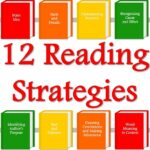GED Tips: How To Improve Reading Comprehension

While the following is by no means comprehensive of what you need to learn in order to score well, it is a good starting point for developing the skills that you’ll need on the entirety of the exam.
The Reading Standard
The structure of the GED exam relies heavily on reading passages with a series of questions at the end to determine your ability to reason, spot details, determine themes and central ideas, and follow development as ideas progress. This can be difficult to comprehend for test-takers because no reading passage ever comes with a set of instructions that announce, “Okay, this is the theme,” or “This is the inciting incident, and this is the climax.” However, you need to be able to perform each and every skill on your own in order to have effective reading comprehension.
Let’s look at each one of these items individually.
Pinpointing the central idea or theme.
“Central idea” is used interchangeably with “theme” when it comes to describing literary function. A reading passage does not have to be a work of fiction in order to possess a central idea. Basically, any work that has a lesson, moral, or focus, has one, and being able to determine what it is will allow you to break down the rest of the work and determine individual parts and how they fit together in determining the whole. One of the best primers for working with themes is to think about some of your favorite movies. By having a visual model for theme, you can start to pick up on it in your reading without the confusion of a bunch of letters, words, and sentences jumbled together. And before you get frustrated trying to decide what the theme is, realize that there isn’t always one set answer. Some works can have multiple themes. As long as you can point to examples in the text that demonstrate theme, you’re on your way. Recent movie examples:
The Avengers — The theme is that we don’t have to agree on method or always see eye-to-eye when it comes to saving the world. It’s okay to be Democrat, Republican, religious, atheist, mother, father, single, etc., as long as you try to do Good. Hulk, Iron Man, Captain America, Thor — they didn’t get along all the time. There are numerous examples in the movie of this. However, when it came to saving the day in the only way they could, they worked together and looked out for one another. Essentially, it’s a film about finding common ground with one another in order to best serve civilization.
Prisoners — The theme here is that two wrongs definitely don’t make a right. Hugh Jackman is a father, whose daughter is kidnapped. Police have a suspect, but not enough evidence to hold him, so Jackman takes the law into his own hands and does some terrible things to the man without knowing for sure that he’s guilty. Without giving out too many spoilers, he learns a sobering lesson.
The Hunger Games: Catching Fire — If we had to pick a single theme on this one, we’d say it’s that sometimes, there are more important things than surviving the game. Katniss makes it out of the first Hunger Games alive, but her newfound freedom comes with a heavy price. She’s forced into the role of figurehead for a “sport” she abhors — one that costs the lives of people like her and her family. Throughout the film/book, she realizes there is a choice she must make with repercussions at both ends, and ultimately, keeping her life isn’t that important if it means supporting an evil, barbaric way of life that only rewards the elite.
Following development.
In each of the above examples, you can point to specific scenes to justify each theme. Being able to link up these supporting details and see how they work together to support the whole shows that you’re able to comprehend and follow development. If you can do it with a movie, you can do it with a written work. After all, a reading passage is just a film where the words are the stars instead of the actors. There’s no reason why you can’t transfer your understanding of these skills from one medium to another. Mostly, it boils down to being able to train your mind to handle it. That’s why we recommend practicing on your own in 500- to 1,000-word blocks of cohesive text. Generally, you’re not going to see a reading passage longer than that on an exam (and 1,000 is a little high).
To hone the skill of following the development of ideas, start with student example essays. You can find many of these by taking our free GED test, or by checking out student models on sites like TheWriteSource.com. On the latter site, which specializes in student models, you can see examples from first grade on-up. Start with the level that you can comprehend and work through all the examples until you’re comfortable enough to move up a “grade.”
As you read an essay, don’t stop to label things. Just save the major question for the end — what is the lesson/focus/moral of what I just read? Once you know the answer to that, you can pick out specific examples — from the title to individual sentences and word choice — to justify that conclusion. Congratulations, you now know how to follow developing ideas!
Summarizing details.
While the details are really the smallest part of a reading passage, we saved them for last for a reason. We wanted to get you comfortable with the more difficult aspects of reading comprehension so that when theme and development come together, the rest fall in to place. In fact, we’ve already done a lot of the work here by simply pointing out our reasoning for the themes we selected on our recent movie examples. While we justified our theme choices by demonstrating how the details merged together to create the central idea, we also enabled ourselves to pull individual ideas from the “text” of the overall film. Being able to determine how the details work together shows that we can naturally pull isolate details from a greater body of work. And when you can isolate, you can summarize. It’s just a matter of telling what happened.
In Summary
Want to get cozy with reading comprehension? Start by approaching it through a medium that makes you feel at ease. For us, it was movies and comic books. By simply knowing what you like about something, you’re able to determine things like theme, development, and summarization. From there, it’s just a matter of taking these skills from one medium to the next. Best of luck as you tackle the GED this year. May you always be successful!








